PBR offers comprehensive analytical services for screening and detection of various allergens and specific toxins in food products, natural health products and water using highly sensitive immunoassays and analytical equipment. Testing is essentially conducted to prevent the occurrence of allergic reactions in sensitive individuals and to minimize environmental and public health concerns.
A food allergy is an adverse immune response to a food protein, and is distinct from other pharmaceutical and toxin-mediated reactions or food intolerance. Most allergic reactions could be prevented by simply avoiding potentially allergenic food products and carefully reading food labels.
People can be allergic to any food, but only a handful of foods are responsible for most (90%) allergic reactions. These common foods are known as the “Big Eight” and include milk, eggs, peanuts, tree nuts (such as walnuts, almonds, and hazelnuts), soy, wheat, fish and shellfish (such as shrimps, mussels, crabs).
In addition some people may react to certain other foods and their components such as Gluten. PBR provides specialized analytical services for food allergens and gluten testing using the standard immunoassay kits.
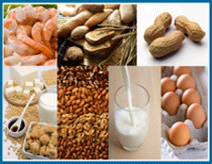

Cyanobacterial Prevalence And Toxin Production
Cyanobacterial toxins are the naturally produced poisons stored in the cells of certain species of cyanobacteria (blue-green algae) and are released in the water when the cells rupture or die naturally or by a chemical disinfectant treatment. Cyanobacteria generally occur in warm, shallow, slow-moving or still waters, and their massive growth leads to the production of algal blooms, scums and mats in nutrient-enriched freshwater bodies like ponds, dugouts and lakes.
Types of Toxins
Two major groups of cyanobacterial toxins are Microcystins and Nodularins. Microcystins are monocyclic heptapeptide liver toxins produced by species of cyanobacteria belonging to the genera Microcystis, Anabaena, Oscillatoria and Nostoc. Nodularins (monocyclic pentapeptides) are also liver toxins produced by the brackish water contaminated with Nodularia.
Health Hazards
The occurrence of these cyanobacterial toxins in water bodies is a well-recognized public health hazard. These toxins have been linked to incidences of human illnesses including allergies, skin irritation, vomiting, diarrhea, fever, headache, and liver damage and cancer. The major human exposure routes include the consumption of contaminated drinking water, recreational use of polluted lakes and rivers and the consumption of certain algal health food products. Livestock, wildlife and fish exposure to microcystins is through the consumption of algal cells from contaminated water
Microcystins
Microcystins are extremely stable in water because of their chemical structure and can survive in both warm and cold water. They can withstand radical changes in water chemistry, including extreme pH. About 60 different kinds (congeners) of microcystin have been found; however, Microcystin-LR is the most commonly found cyanobacterial toxin.
Microcystins Exposure Guidelines
In Canada, the Federal-Provincial-Territorial Subcommittee on Drinking Water has recommended a maximum acceptable concentration for total microcystins in drinking water as 1.5 ppb (ug/L) or 0.0015 mg/L microcystin-LR equivalent. In USA, the FDA has established monitoring guidelines for blue-green algae based foods at 1ppm (ug/g) microcystin equivalent.
Microcystins Screening Assays
Microcystins and nodularins have been found to be potent inhibitors of protein phosphatase types 1 and 2A. Accordingly, a colorimetric protein phosphatase inhibition (PPI) assay has been described for the detection of microcystins and nodularins. PBR employs the PPI and specific immunoassays for rapid screening and quantitative determination of microcystins and nodularins in food and water.
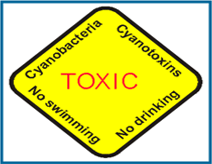
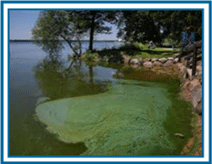
Prevalence and Persistence
Mycotoxins are secondary metabolites produced by a variety of molds on several agricultural commodities and cannabis under specific environmental conditions. It has been estimated that about 25% of the grain produced each year worldwide is contaminated with mycotoxins, which are capable of causing diseases (mycotoxicoses) through dietary, respiratory and dermal exposure routes.
Since mycotoxins generally resist decomposition or digestion, they can persist in the food chain in meat, dairy products and other consumer products, including cannabis products for a long time. They are generally not destroyed by either heating or freezing.
Based on the recognition that most fungal toxins occur in groups of chemically related metabolites, approximately 400 compounds are now designated as mycotoxins. Of these, about a dozen groups regularly receive attention because of their threat to human and animal health. In Canada, the mycotoxins that are of major significance and concern are the aflatoxins, trichothecenes (predominantly deoxynivalenol, DON, also called vomitoxin; diacetoxyscirpenol, DAS; nivalenol, NIV; T-2 toxin and HT-2 toxin), zearalenone (ZEN), fumonisins (mainly FB1), and ochratoxins (predominantly ochratoxin A, OA).
Aflatoxins (AF), most potent human carcinogens, are commonly encountered in food and feed products imported in Canada from warmer tropical and subtropical regions and countries. These toxins are predominantly produced by contamination of mold, most common being the Aspergillus species. Cannabis specie of plants , now widely grown in Canada and other countries, are highly susceptible to mycotoxin producing mold species. The four major aflatoxins are called B1, B2, G1, and G2. Of these, aflatoxin B1 is considered the most potent carcinogen, and is usually the major aflatoxin produced by toxigenic fungi.
Regulations and guidelines for recommended tolerance levels for several mycotoxins including aflatoxins have been established in Canada and USA.
Screening Assays For Mycotoxins
PBR provides specialized analytical services for the screening and testing of mycotoxins in food, feed, dairy products, cereal grains, nuts, corn and other crops, including Cannabis species using highly sensitive and validated immunoassays.
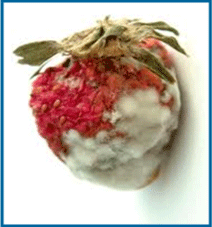
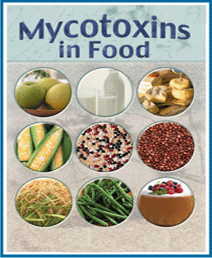
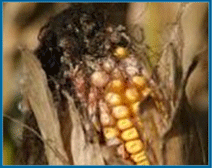
Exposure And Adverse Health Effects
Endotoxins are heat-stable toxins associated with the outer membranes of certain gram-negative bacteria such as species of Salmonella, Shigella, Pseudomonas, Neisseria, Bordetella, Brucella, Vibrio and E.coli. They are not secreted by cells in the surrounding medium but are mostly released when the cells are disrupted or destroyed. Endotoxins, also called lipopolysaccharides (LPS), are a combination of lipid (Lipid A) and polysaccharide side chains.
The biological activity of endotoxins is mainly associated with the LPS, toxicity with Lipid A, and immunogenicity with the polysaccharide components. Boiling for 30 minutes does not destroy endotoxins. However, certain powerful oxidizing agents such as peroxides, superoxides and hypochlorite have been reported to neutralize endotoxins.
Exposure to large quantities of endotoxins produce hemorrhagic shock and severe diarrhea, while smaller amounts may cause fever, altered resistance to bacterial infection, leucopenia, leukocytosis, and numerous other health effects. Therefore, it is essential to remove all traces of endotoxins from drugs, injectabales, pharmaceuticals, and other biological products, including dialysis fluids to prevent illnesses and adverse health effects in humans.
Testing For Endotoxins
PBR uses a very sensitive Limulus Ameobocyte Lysate (LAL) assay, based on the Gel Clot Method, for detecting the presence of endotoxins in diverse samples. Most of the endotoxins testing are performed on Reverse Osmosis (RO) water (frequently used in dialysis), serum, drug vials, hospital specimens, pharmaceuticals products and a variety of environmental samples.
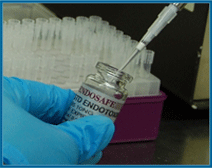
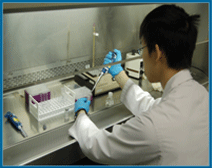

© Copyright PBR Laboratories Inc. All Rights Reserved.
Website Development | Hosting | SEO | Digital Marketing